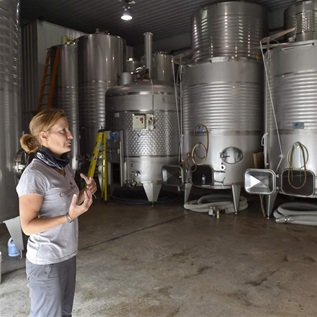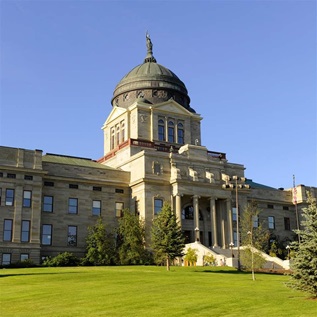Study Documents Cultural Sector as Economic Engine with Strong Civic Support
The regional non-profit cultural sector is an important contributor to the local economy and earned $573 million in annual revenue, according to the Greater Philadelphia Cultural Alliance 2006 Portfolio, a report released today by the Cultural Alliance. The 218 organizations in the report generated 12 million visits annually, with half of them free. However, average operating margins are just 1.7 percent.
“What we found were incredible levels of community engagement, broad accessibility, and a sector that produces tens of thousands of public activities on extremely tight budgets,” said Peggy Amsterdam, President of the Cultural Alliance. “But we also identified many organizations that were struggling and could benefit from expanded resources and more diverse funding.”
The Portfolio offers an unprecedented and in-depth look at the scope of the local non-profit cultural sector. Based on confidential and detailed information from 218 local arts organizations, the report is the first comprehensive look at a sector that provides 14,000 jobs and 17,000 volunteer positions.
“The Portfolio confirms how integral the arts are to the Philadelphia community, both socially and economically,” said Marian Godfrey, managing director of Culture and Civic Initiatives at The Pew Charitable Trusts. “The report will be a valuable tool in helping arts organizations better tell the story of the cultural sector's impact, assets and needs, while providing funders and opinion leaders with reliable data that previously did not exist.”
The report interprets a wide range of data including revenue, employment, attendance and fundraising. Several key themes emerged from the study:
- Residents and visitors are thoroughly engaged in arts and culture in Southeastern Pennsylvania. Cultural organizations produced 56,000 events and generated 12 million visits. Half of all visits were free, and two out of every five visits were by children.
- Arts and culture are significant economic assets for the region. The 218 organizations in the report earned $573 million in revenue, generated 14,000 jobs, and operated cultural spaces equivalent to the combined floor space of the seven largest skyscrapers in Center City Philadelphia.
- Arts organizations run on lean budgets. Two thirds of the organizations studied had less than $1 million in annual revenue. The industry overall had a positive margin of only 1.7%. Additionally, one fourth of all organizations studied had deficits greater than 10%.
- Corporate and most government support for the sector is low and competition for funding is strong. Local governments provide only 2% of total revenue. Corporate support is also low, at 2%, and federal support provided only 1% of total income, or $9 million dollars. Conversely, individuals are the single largest source of income, contributing 16% or $110 million dollars, followed closely by foundations at 14%.
This is the first Portfolio issued by the Cultural Alliance. Future editions of Portfolio will include an analysis of trend data for the sector.
“We welcome this report. The Portfolio will be a critical resource for researchers, arts organizations, funders, policy makers, and others with an interest in understanding the scope and importance of the cultural sector of Greater Philadelphia," said Philip Horn, Executive Director of the Pennsylvania Council on the Arts. "The depth of civic engagement that the report documents is tremendous and shows how valuable the arts are to our communities."
“Our sector is clearly strengthened when we have clear, measurable data to demonstrate social and economic impact of arts investment,” said Robert Lynch, President and CEO of the national advocacy organization Americans for the Arts. “ Philadelphia's Portfolio provides valuable leadership by so thoroughly measuring our sector at the local level.”
According to W. Courtenay Wilson, William Penn Foundationprogram officer, the project “represents an important management tool for participating cultural groups, who can now benchmark their financial and audience data against the sector and monitor their performance over time."
The Portfolio is the first report of its kind in the country and is based on detailed financial and other organizational information reported by 218 cultural organizations to the statewide data collection effort, the Pennsylvania Cultural Data Project (PACDP). The complete list of organizations in the report is available at www.philaculture.org/portfolio.
To compile the 2006 Portfolio, the Cultural Alliance worked with the Southeastern Division of the Pennsylvania Economy League (PEL) on the statistical analysis and interpretation of PACDP data. The figures presented in this report are for the most recent fiscal year available for each organization, in most cases FY2003 or FY2004.
The PACDP is a collaborative project of the Greater Philadelphia Cultural Alliance, the Greater Pittsburgh Arts Council, The Heinz Endowments, Pennsylvania Council on the Arts, The Pew Charitable Trusts, the Pennsylvania Historical and Museum Commission, The Pittsburgh Foundation, and William Penn Foundation. Operated by The Pew Charitable Trusts, PACDP was created to provide access to reliable data about the cultural sector in order to enhance both individual organizational capacity as well as the overall effectiveness of the nonprofit cultural community. Additional information on PACDP is available at www.pacdp.org.
The Greater Philadelphia Cultural Alliance is a leadership organization of over 300 nonprofit arts and cultural institutions located primarily in the five counties of southeastern Pennsylvania. Its mission is to lead the effort to increase awareness of, participation in and support for arts and culture in the Greater Philadelphia region.
The Portfolio was made possible by The Pew Charitable Trusts and William Penn Foundation.
Read the Executive Summary. A link to the full report is below.











